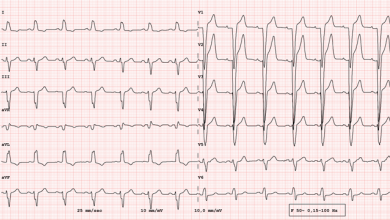Search results
Author(s):
Haipeng Tang
,
Shaojie Tang
,
Weihua Zhou
Added:
3 years ago
Cardiac resynchronisation therapy (CRT) is a widely-performed standard treatment for improving cardiac function and quality of life in patients with heart failure.1 After CRT, however, 30–40 % of patients do not experience improvements in left ventricular (LV) function and clinical symptoms.2–3 The key factors for increasing the response rate to CRT are identification of the optimal LV lead…
View more
Author(s):
Khang-Li Looi
,
Anthony SL Tang
,
Sharad Agarwal
Added:
3 years ago
Heart failure (HF) is a growing and major health burden in western countries. The prevalence of HF is estimated at 1–2 % in the western world, and the incidence approaches 5–10 per 1,000 persons per year.1Cardiac resynchronisation therapy (CRT) has been shown in multiplestudies to improve HF symptoms, quality of life and improve survivals.2–6The two landmark studies, Comparison of Medical Therapy…
View more
Author(s):
Matthew J Dewhurst
,
Nicholas J Linker
Added:
3 years ago
Author(s):
Ksenia Sedova
,
Kirill Repin
,
Gleb Donin
,
et al
Added:
2 years ago
Author(s):
Demosthenes G Katritsis
Added:
3 years ago
Mechanical dyssynchrony, ie nonsynchronous contraction of the wall segments of the left ventricle (intraventricular) or between the left and right ventricles (interventricular), impairs systolic function and ventricular filling, increases wall stress and worsens mitral regurgitation. It is most readily defined by the presence of QRS widening and left bundle branch block (LBBB) configuration on…
View more
Author(s):
George Thomas
,
Jiwon Kim
,
Bruce B Lerman
Added:
3 years ago
CRT is an essential treatment for patients with heart failure and reduced ejection fraction as it can restore left ventricular (LV) electrical and mechanical synchrony. It has been shown to increase quality of life, improve functional status, reduce hospitalisation, improve LV systolic function and reduce mortality in properly selected patients.1,2 While CRT is an effective therapy, approximately…
View more
Author(s):
Frits Prinzen
,
Joost Lumens
,
Jürgen Duchenne
,
et al
Added:
2 years ago
Author(s):
Demosthenes G Katritsis
,
Hugh Calkins
Added:
6 months ago
Clinical Evidence Demonstrating the Benefit of MultiPoint Pacing Cardiac Resynchronisation Therapy
Author(s):
Axel Kloppe
Added:
8 years ago
Article
Author(s):
Žarko Calovic
Added:
8 years ago















